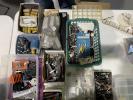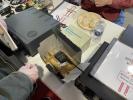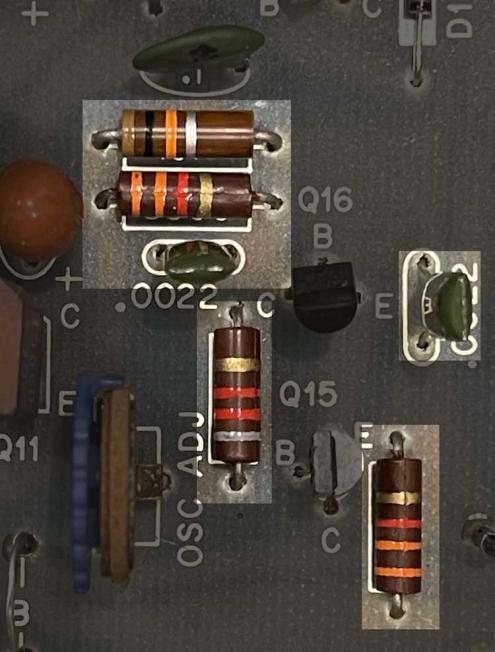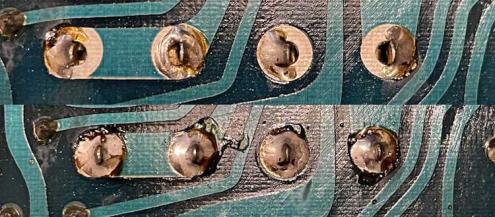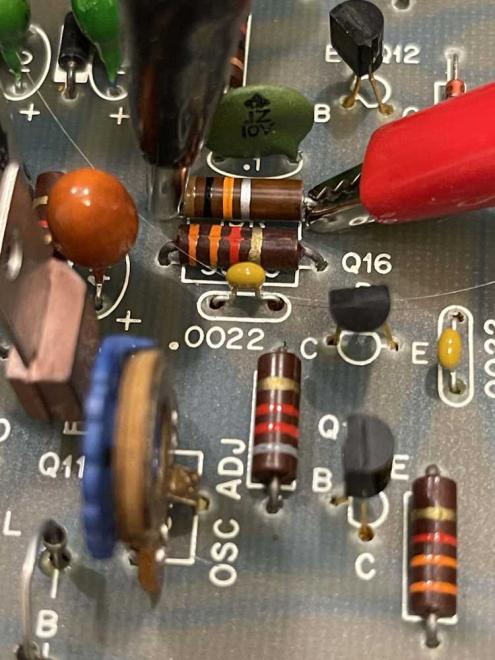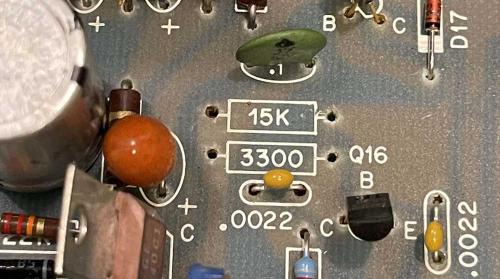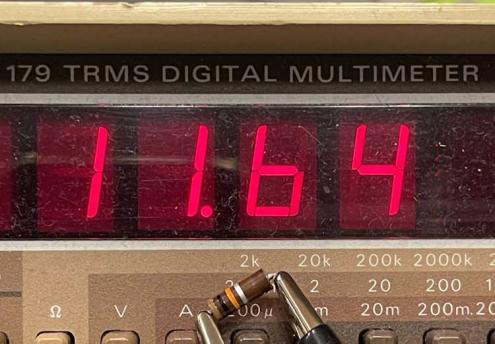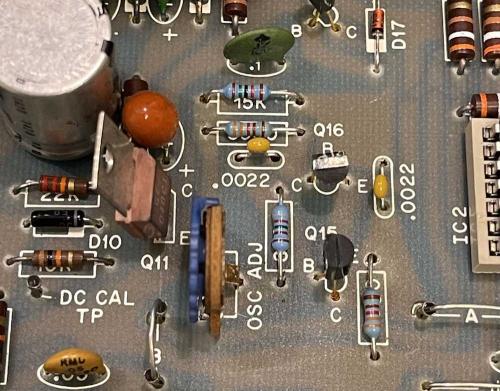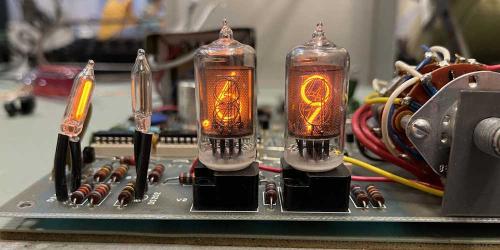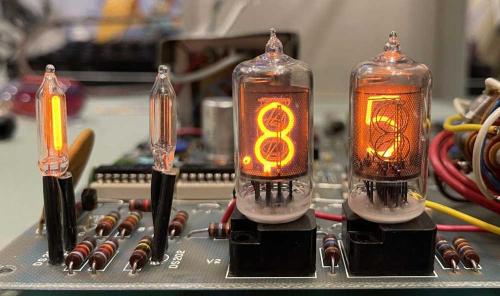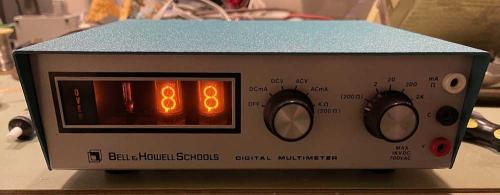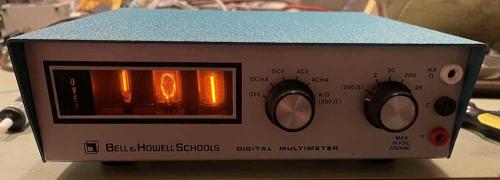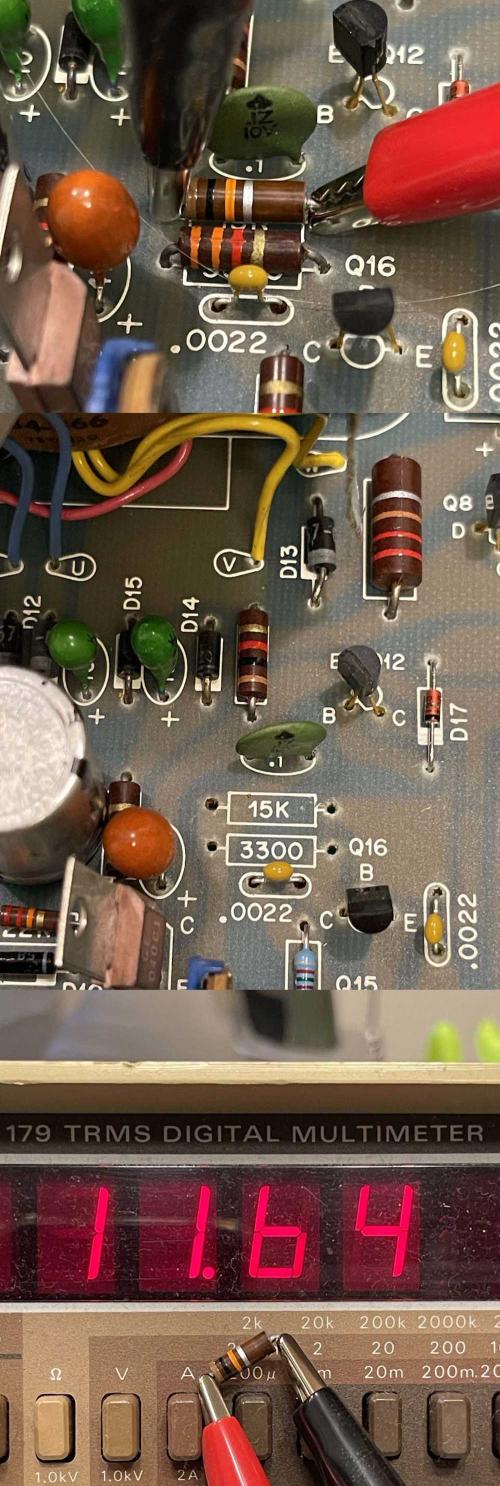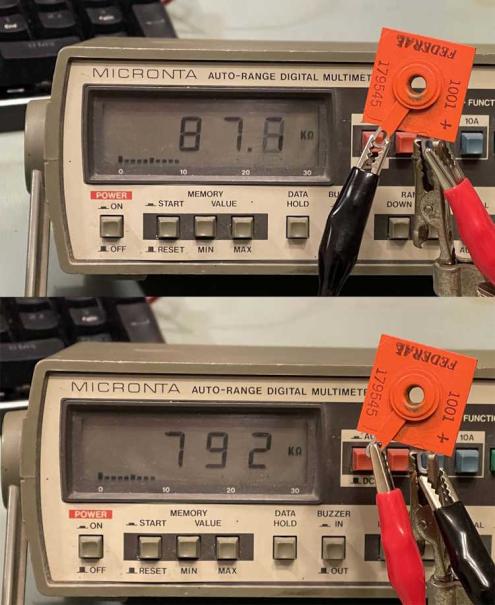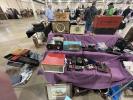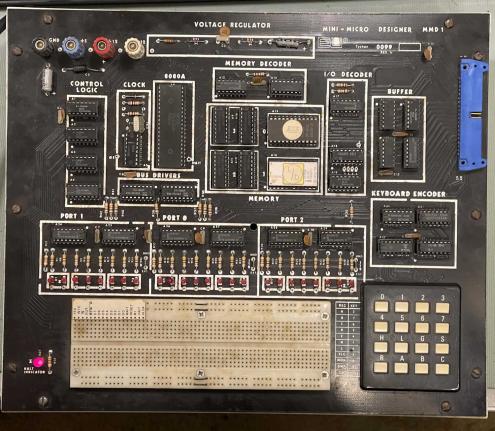- 2024
- Jan
- 15
The Sunday Creek ARF Hamfest 2024
I’d never attended this show, but was pleasantly pleased with the turnout. There were perhaps a few dozen vendors and a packed house of visitors in the old gymnasium of the converted school. Quite a bit to look at, and prices were really good. I managed to bring home some good things for a total of $10, almost spending more on drinks and snacks on the way home! I didn’t think the weather was going to cooperate, but it turned out to be just a bit slushy, cold, and windy.
We wandered the aisles for about an hour, taking some time to stop and look at the old photos on the walls from the building’s time as a school, talking to some of the vendors, and digging through boxes of stuff. Since this is so close and easy to get to, I’ll probably attend next year as well - weather permitting of course!
- 2024
- Jan
- 14
The Sunday Creek Hamfest has come and gone,
And I have to say it was a pretty good little show. The weather wasn’t planning on agreeing on the ride down, but it turned out to be just a skiff of snow and cold, windy weather. There were maybe a couple dozen vendors, and a packed house full of guests to the point where cars had to shuffle so others could leave.
While I only spent an hour there, I walked out with some good stuff as did my fellow show-goer. I’m working on processing pictures, and will post those soon.
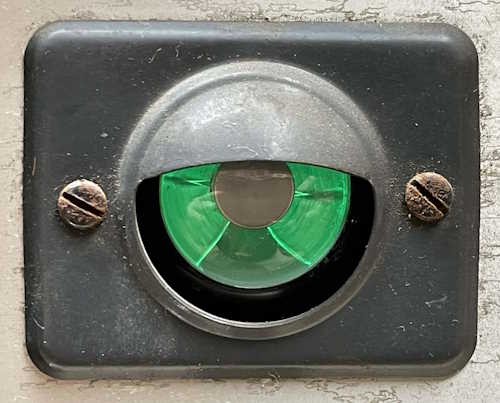
- 2024
- Jan
- 8
Stabilizing the oscillator in the IM-1212 Meter, part 2
One of the issues with the IM-1212 and it’s clones is that it drifts all over the place, and part of that is the oscillator that actually does the counting for the display. This is an attempt to replace that section with better parts to see if it’s any more stable. I started this with this previous post, and present my findings here.
We start by identifying the components of interest and removing the board:
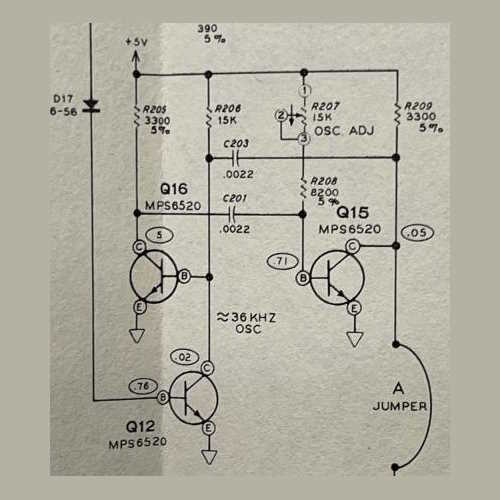
In the oscillator circuit, other than the transistors, are the following passives:
15k
8.2k
3.3k
3.3k
0.0022uF
0.0022uF
15k Potentiometer
We’re not going to replace the pot, but all of the other components are going to be replaced by film and/or temperature stable to 25ppm components.
The sharper-eyed among you will have already seen an issue. There’s no 15k resistor identified here, and I’ll talk about this a bit later in the process.
Before taking the board out, I let it warm up and preset the oscillator to it’s suggested 85 count.
Getting the board out isn’t too bad. There are 6 screws, three solders, and a clamp.
The screws are the ground lug for the power cord on the back panel, the two screws that hold the transformer down, and one screw each in the remaining corners. One of the screws is under the switch assembly and can just be seen by the red input jack, so you’ll need something relatively thin and long for this one. They all appear to be the same size.
Next are the three jacks on the input. I unsoldered these at the front panel itself, but the white wire was long and flopped around and broke because it is solid wire. Not a big deal there.
Last, is the clamp for the power cord on the back panel. This is just squeeze it with pliers and work it out. I left the power cord attached to the unit and just pulled it through the bottom case so I had enough room to work, and used the ground lug screw and nut to temporarily hold the transformer down as not to break the relatively fragile connections to the PCB.
Before getting started, I did an inspection of the board. There were a number of bad solders on some of the components - mostly things with thick leads like the potentiometers. I took a minute to clean those up before getting started.
Removing the parts is relatively easy, this being a single sided board. A soldapult and some wick made short work of the old solder, and that’s when I noticed the 15k resistor wasn’t.
The schematic indicates 15k, as does the board - and another unit I have has the correct 15k part in it. I have to wonder why this was there - did the original builder not get the correct part, or was it broken during assembly? Who knows - but it didn’t really matter as the device worked.
Interesting.
The rest of the parts are replaced without issue, and the correct 15k is placed where indicated.
There’s not a lot of current or voltage here, so I wasn’t particularly concerned with the size of the resistors.
After doing a precursory check of parts, solders, and whatnot, I powered the device up on the bench. The oscillator count was quite different, so my replacements had some effect.
Some warmup time later and I adjusted the oscillator to the correct value:
Putting it back together and:
It’s already drifting. I set it back to 85 and let it set until the next day.
It didn’t do a thing. I will say, however, that it seems easier to adjust it back - there’s not as much play in the overall adjustment - you can set it and it generally stays there until the temperature changes.
So, my conclusions? This whole thing probably would need rebuilt with modern components in order to maintain any stability in measurement. For now, it’s just going to be sitting in a rack on all the time measuring the 12V rail of a power supply so … it is what it is, I guess.
- 2024
- Jan
- 3
Mistakes were made - a long long time ago.
2024 brings this device from years ago, which I opened to find a mistake in assembly. This Bell & Howell IMD-202-2 NIXIE meter has a 10k resistor in the oscillator circuit, where the board and schematic specified a 15k.
The carbon resistor used was so sloppy that it didn’t really matter what went in there, of course, as long as it was close enough to the value specified. The part had long since drifted out of tolerance, the upper limit being 11k - this one read 11.64k!
I have to wonder if the person building this kit did that accidentally, or on purpose because they didn’t have the correct part, or maybe they chose it to correct something else. I’ll never know, but a 15k precision went in to the circuit and seems to be working without issue. I have to assume it was simply an honest mistake, as I didn’t see any evidence of rework on the bottom of the board.
Stay tuned for my findings on trying to fix some of this device’s drift.
- 2023
- Dec
- 23
An odd little part - single plate selenium rectifier.
Here’s a weird little part I picked up at a show, it was in a “Take as many as you want” box. It’s a single plate selenium rectifier. These components were widely used in the time between tube rectification and silicon rectification, but fell out of service because silicon diodes are simply much more efficient at rectifying AC voltages and providing other diode services.
It’s marked as Federal 179545. It has a forward DC resistance of about 88k, and a reverse resistance of 792k. So what would this have been used for? Bias voltages maybe? Or a diode that would blow if the current went higher than anticipated? I’m not sure.
It’s just a cool piece of yesterday’s technology at this point.
- 2023
- Dec
- 22
Stabilizing the oscillator in the IM-1212 Meter
One of the problems with the Heathkit IM-1212 / Bell&Howell IMD-202-2 meter is the oscillator is made of crap-tier parts, and has a problem drifting all over the place. 10% carbon comp resistors and who knows what capacitors make up the parts complement. While that was probably fine for the age, a few dollars more could have made this at least a decent instrument for it’s time.
The main problem here is the parts are not temperature stable. For example, the meter I just recently acquired (see https://wereboar.com … ter-for-some-reason/) came in to the shop cold from being in a delivery van. It was allowed to warm up a little and plugged in. Oscillator was sitting at 94. It drifted down to 79 as it warmed up, and then back up to 88 - all in the course of an hour. That’s not good when you’re relying on that signal to generate the timing for your counts!
There’s not much to the oscillator. A couple of transistors for the oscillator itself, an inhibit transistor to start and stop the counter, and the passives that make up the oscillator circuit itself.
Here’s what we’re interested in:
There are two 3.3k 5% resistors, a 15k 10% resistor, an 8.2k 5% resistor, and two 0.0022uF capacitors. What’s the PPM drift for temperature on any of these parts? “Yes.”
So, off to Mouser we go!
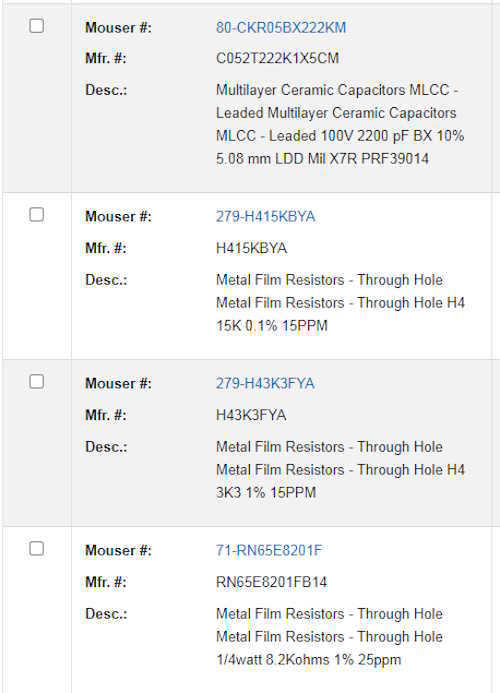
Are these parts overkill? You bet. These are “Parts exceed value of device.” But they’re not really that expensive these days. So…why not? It’s mostly to satisfy my own curiosity to see if it really does make a difference in how the unit operates. If not…oh well, I learn something either way.
(The 15k pot may get replaced with something better - I was thinking of bringing it out to the back panel somehow, since it’s the main pain point.)
I do have some lesser quality (but still better than what’s in there!) parts, if I get ambitious I may replace some stuff before the actual parts arrive. Stay tuned!
- 2023
- Dec
- 17
December 2023’s Scott Antique Market.
There wasn’t quite as much at the December show as opposed to the November show, but there was still a lot to look at. I picked up an oil lamp to match one I already have, and took the Humble Oil tiger with the horse pee stickers home. The stickers came off with some coaxing from a heat gun, so I’m pleased with that. My fellow show-goer bought some cheesy Christmas LPs because you can’t have Christmas without random “Why the eff is that?” records playing on the turntable. A Stoneman Christmas, anyone?
The next show is in January. There’s a small hamfest happening about the same time, so I will probably go to that instead, unless they are happening on different weekends (which they are!)
- 2023
- Dec
- 15
All of the documents currently in wereboar’s archive.
I’ve posted a number of manuals and things over the past few years, and they’re scattered around the site. Here’s all of them to date, this list will be updated as new ones are added.
Since this was originally posted, I’ve added a document share to this site that contains everything that I post about (and have a document for.) Find it here: https://wereboar.com … r=wereboar-documents
For the most part, the OX Drive documents have been removed.
Please share, but let them know where you found it. Come visit this little pig!
- 2023
- Dec
- 9
I have to fix the equipment before I fix the equipment.
Earlier this year, I went to the Cuyahoga Falls hamfest and brought home a Regency EC-175 frequency counter. This device has a OCXO in order to maintain a low PPM deviation for FCC compliance use. It’s really kind of an odd piece for Regency, and was going for next to nothing.
https://wereboar.com … yahoga-falls-hamfest
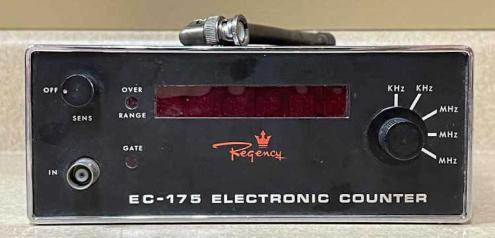
The Regency counter works, but is off by a considerable margin. I suspect this is probably just the 10MHz oven needing some adjustment.
My plan was to poke around inside of it and determine what was what, as I don’t have a service or operators manual. (I’ve since found an operators manual and will post it as soon as possible.) I was planning on using a cheap Lodestar signal generator and my Fluke 1910A 125MHz frequency counter to try and bring the Regency into adjustment.
So I set up, and…the Fluke counter doesn’t work. It will work as an up-counter, but won’t count frequency input. Hitting the “CHK” button, I get nothing:
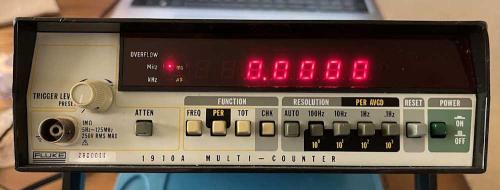
This should be showing me the internal 10MHz clock. I play with various things and get nothing.
Time to open it up.
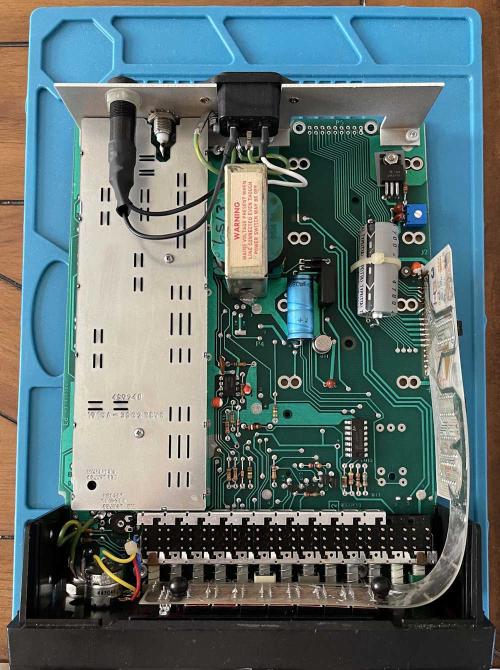
Nothing looks burnt. The section I need is underneath the RF cover, so off it comes. The parts in question, according to the schematic, are at the back of the unit near the metal backplate.

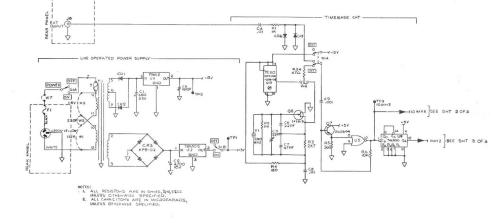
But before we get into those parts, a quick power supply check is in order. There are two voltages, +5 and -12.
+5 = 5.02
-12 = -11.80
The -12V is a TO-5 can device, and is pretty warm. I’m not sure if that’s supposed to be like that, but since -12 isn’t in the oscillator circuit, I’m going to ignore it for now. The logic supply of +5 is fine, however, so we’re good there.
The parts I’m going to be interested in here are :
U5
Q7 (under the heat-shrunk connector in the foreground)
Q8
Y1
I’m not really worried about U9 here because if I don’t have any 10MHz, I’m not goign to have any 1MHz. U9 is a divide by 10, so we’ll worry about that when and if 10MHz is available.
U5 pin 10 should be 10MHz. There’s nothing, so move back.
Q7 Base should be 10MHz. There’s nothing there, either.
I’m now going to switch the counter to EXT mode, as to remove those two parts from the circuit.
Q8 is an interesting part here. It’s a JFET, and the schematic appears to show a 2N3819. (It actually looks like SN3819, which isn’t a valid number.) However, that’s not what’s in the unit. I have a J310 VHF JFET which has a different pinout.
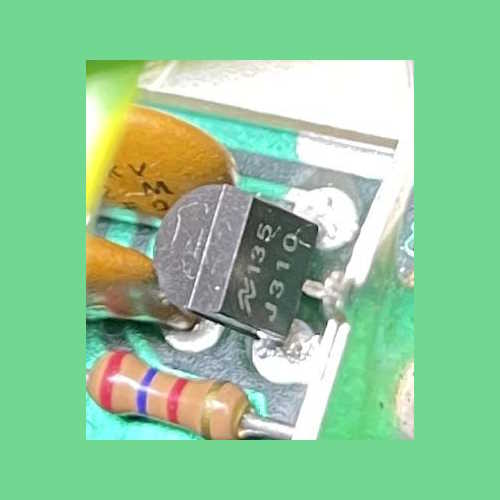
Always be careful, sometimes manuals you find online contain older or newer revisions of the device you’re using!
This confused me at first, because I was trying to test it like a 2N3819 and was getting a short on Gate to Drain, Pin 2 to 1. What I was actually reading was Drain to Source, which should be a somewhat low resistance. In this case, I had 37 ohms. That’s probably fine for a JFET, since Drain and Source are mostly the same slab of silicon. Without pulling this guy out and testing in an active tester, I assume it’s good.
No capacitors appear to be shorted. The few resistors in the circuit are fine for what they are, and are well within tolerance.
That just leaves the crystal. I don’t really have any way of testing it. I can try capacitance, but the resistors in the circuit will ruin that low pF measurement, so the only way is to pull it out.
The conclusion is the oscillator isn’t. The assumption here is the crystal is bad. Maybe cracked or internally damaged from time or handing? I don’t know - I’m going to try and obtain something similar to swap in and see if it works. There’s also a possibility I could find a cheap TXCO or OXCO to put in the area where Fluke would have mounted a TXCO, which should provide a better device.
That assumes the device is operational up front. These aren’t known for being reliable as they age, perhaps I’m just wasting my time with this. But I know where the problem lies, so there’s no harm in getting a few dollars in parts to try and make it work again.
- 2023
- Dec
- 3
An MMD1 8080 Trainer
This guy was given to me, well, probably in the late 90s because it was missing it’s 8224 clock chip. The person that gave it to me, since deceased, didn’t really want to go through the trouble of finding one so he asked if I’d like the device instead. Sure, why not.
I eventually found an 8224 on a device at a show, and put it in recently. I then realized that, unlike most other trainers, this one has no LED numeric displays! Well… the HALT LED will light and extinguish if I play with the keyboard, so I assume something is going on since it didn’t do that before. I thought about dumping the monitor ROM, but someone has already done that. I also need to investigate the power supply, it has a very loud hum and may need some modernization.
It’s nothing really special, just another one of many 8080 trainers that were available on the market. It will go beside my FOX Z80 trainer and my BellMAC 8 device for display. After it gets a little cleanup, of course, the thing was filthy when I got it and I have not done a thing with it.
The monitor ROM and some other information is presented here: http://www.decodesystems.com/mmd1.html



